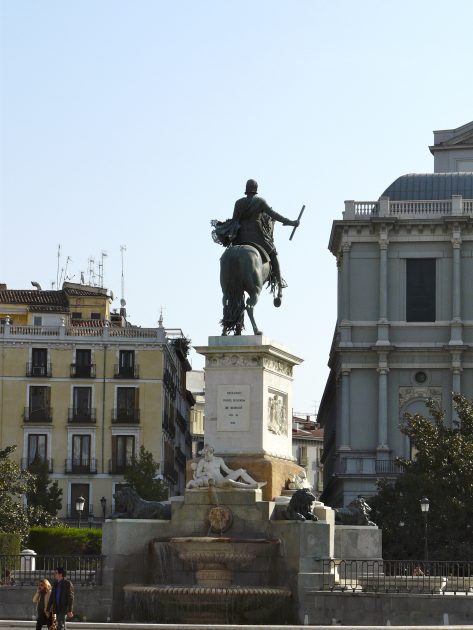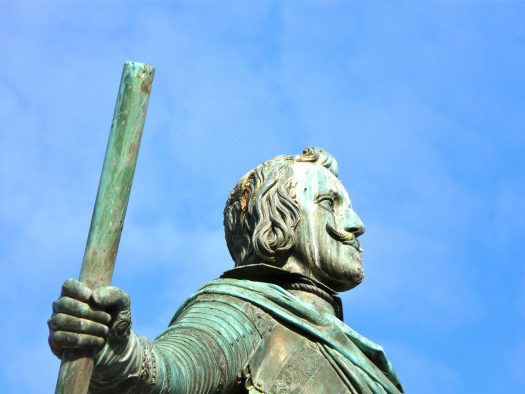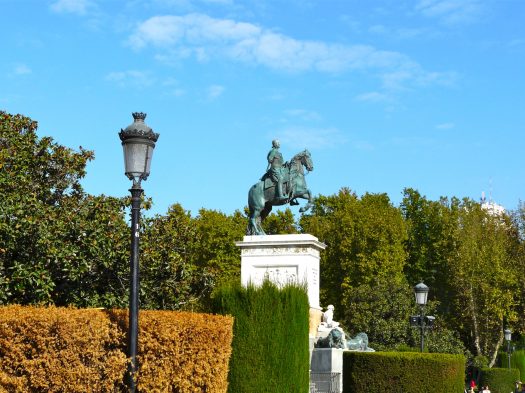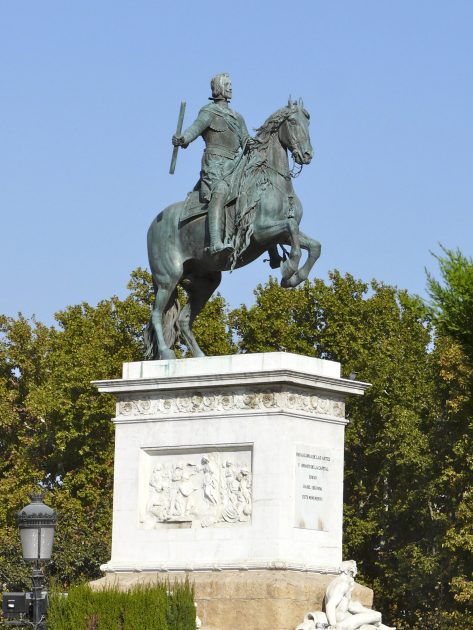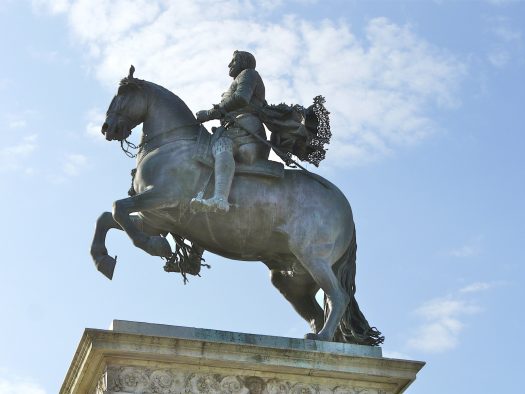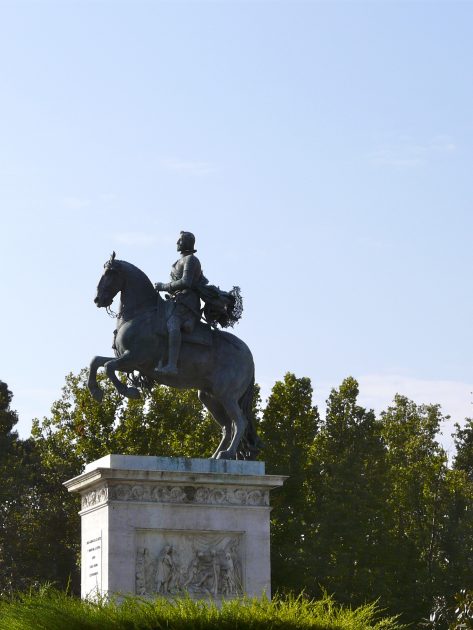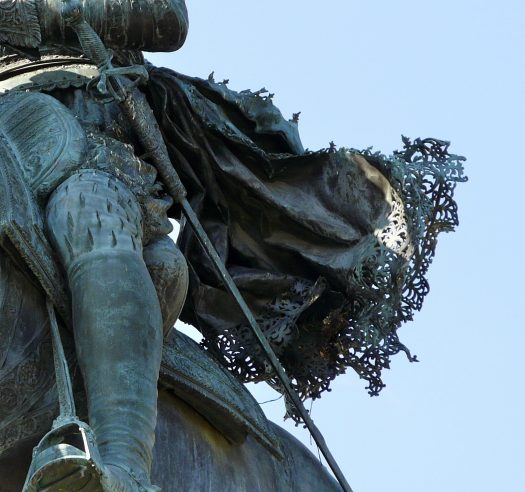The equestrian statue of Philip IV was the last major project of Pietro Tacca. The king, on his own wishes, is shown on a rearing horse, at the time an unprecedented technical feat of bronze casting on this scale. Rubens and Velázquez had already used the baroque pose in pictures of Philip. A copy of a painting by one of these artists was sent to Florence to act as a model, but the smooth, generalized treatment of the work shows that Tacca essentially remained a Mannerist sculptor.
The solution to the problem of keeping the statue upright was by positioning the centre of gravity as far back as possible. The statue is constructed from two distinct sections; the rear of the horse is solid bronze, with the majority of the weight, while the front is hollow. Tacca had help from Galileo Galilei. He determined the precise weights and forces, and proclaimed it would stand forever: the statue is still standing to this day. The original calculations and hand drawn plans penned by Galilei are still in existence and on display in Italy. Tacca started the sculpture in 1634 and completed it six years later in 1640. He died soon after. This was his last piece of commissioned work, which many suggest is his finest.
The achievements, both artistic and mathematical, were lost on Philip IV. When he first saw the statue he proclaimed that he did not like it and that the face was completely wrong. The statue was decapitated for six months while a new head was fashioned to the approval of the king.
